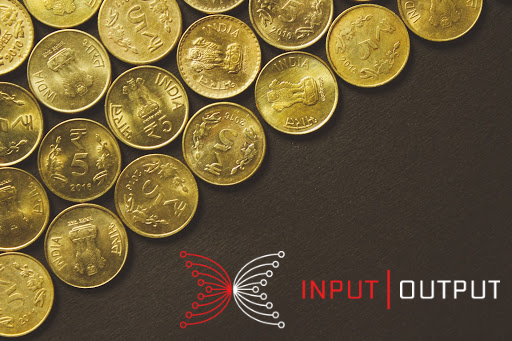Native tokens on Cardano

Last week, IOHK, developers of the Cardano blockchain, updated the platform’s ‘native tokens’ testnet.
The upgrade provides multi-asset support, allowing experimenters on the testnet to test and become familiar with utilising cryptocurrencies from other blockchains on Cardano and creating their own tokens prior to mainnet deployment. The update introduces the ability to create ‘native tokens’. This is another important step in the ‘Goguen’ rollout, which, along with multi-asset functionality, will see smart contracts enabled on Cardano this year.
Native tokens are an exciting utility feature for Cardano, which will allow it to handle tokens and cryptocurrencies from other blockchain platforms in the same way and with all the key functionality available to Cardano’s native currency, ada.This solution allows tokens from Ethereum, whether for monetary value or utility intentions, to be represented on Cardano without the need for smart contracts or custom code. It also enables those tokens to enjoy all the key benefits of Cardano’s principal currency, ada, meaning that other blockchain applications from other platforms can take advantage of Cardano’s superior speed, security and reduced transaction costs.
Fixing the current problems with tokenization
The current tokenization process on other platforms like Ethereum requires the creation and implementation of custom code. This adds a layer of complexity, cost (other chains require smart contracts to execute for tokens), and inefficiency, as token code for both standards is replicated and adapted, rather than being part of the system itself. It also leaves room for human error. If custom code is done sloppily, it can introduce bugs that could lead to financial loss, as was seen in 2017 when software bugs led to the loss of $300m worth of Ethereum’s cryptocurrency.
Cardano native tokens are set to change this. The solution enables tokens to behave in a similar way to Cardano’s principal currency, ada, allowing projects to access market-leading levels of speed and security, and minimising unnecessary costs.
How Cardano does hard forks differently
Hard forks can be at best disruptive, and at worst, harmful. This is because in a standard hard fork event, the history of the pre-forked blockchain is no longer available, which can lead to unintended consequences such as earlier blocks being lost if there isn’t careful planning, testing, and execution.
Cardano’s method for hard forks is probably more accurately described as a ‘soft fork’, as it calls minimal disruption even for large changes.The platform has a unique ‘hard fork combinator’ which combines upgrades to the blockchain without triggering service interruptions or a network restart – and, crucially, it maintains the history of the previous blocks. The hard fork combinator was first proven effective during the Shelley upgrade, and will be used in each stage going forward.
From Goguen to Voltaire, Basho and beyond
The Goguen element of the Cardano blockchain’s development will add the ability to build decentralized applications (DApps) on the platform, and create utility of the blockchain. This means that developers, entrepreneurs and enterprises will be able to build their solutions on the blockchain, so we will start to see the first real world use cases for Cardano. The native asset functionality is due to be deployed on mainnet in the next few weeks, and the refreshed ‘Plutus Playground’ was launched last month, providing an environment for writing and testing smart contracts in Cardano’s native smart contract development language, Plutus. The Plutus scripting language will be available for use on the Cardano mainnet later this year. Plutus is designed for flexibility and security in the world of DApp building, for industries including supply chains, track and trace, medical records, identity, voting, property registration, P2P payments, financial systems and a vast array of additional use cases.
In 2021, we will also see the continued development of ‘Voltaire’, Cardano’s decentralized governance component, designed to put control over the future of the blockchain in the hands of the community. In early January, Cardano launched the third in a series of innovation funding rounds, seeking proposals for the future development of the Cardano ecosystem. These funding rounds are one component of Voltaire, which is called ‘Project Catalyst’. This allows ada-holders to decide, through a novel ‘on-chain’ voting process, with which proposals are funded. This latest $500,000 round follows the successful completion of ‘Fund 2’, a $250,000 round, which attracted proposals on everything from improvements to Cardano, to Cardano adoption in West Africa and educational initiatives designed to simplify development on Cardano, lowering the barriers to entry for developers to build on the blockchain.
Project Catalyst aims to be the world’s largest decentralized innovation fund, and with 1,725 unique wallets, 4,300 members and 566M ada participating in the vote, it has more unique voters than the world’s top 100 ‘decentralised autonomous organisations’ (DAO’s) combined.
The final piece of the puzzle is Basho, an era of optimization, improving the scalability and interoperability of the network. Basho is about improving the underlying performance of the Cardano network to better support growth and adoption for applications with high transaction volume.
Overall, Basho will see Cardano become one of the most high performance, resilient, and flexible blockchain platforms in the industry. This will provide a network infrastructure with the capability to scale in a sustainable, secure way, as well as the ability to add new functionality without compromising the reliability at the core of the network.
The deployment of native tokens marks a significant stage in Cardano’s journey, bringing it closer to true decentralization and scalability, utility, and sustainable governance. When Mary is implemented, users will be able to create their own tokens for a large range of innovative applications: Decentralized Finance (DeFi), and countless other business use cases.
James Bowater in conversation with Aparna Jue, Product Director at IOHK